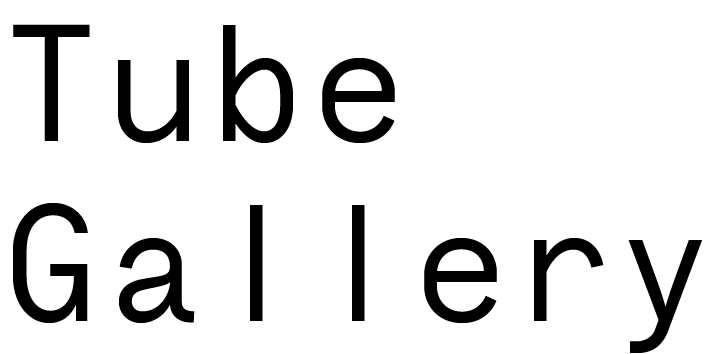CAN ART
Ibiza
June 25·29, 2025
For CAN Art Ibiza, Tube Gallery brings together a group of artists whose practices span painting, sculpture, installation, moving image, and text—but who are united by a shared commitment to probing the complexities of contemporary life through material, aesthetic, and conceptual experimentation. These are not artists bound by a single movement or school, but rather by an urgency to respond to the world as it is now: saturated, unstable, performative, and mediated.
From poetic abstraction and digital-age commentary to sensory immersion and speculative objects, this selection highlights the wide-ranging, interdisciplinary, and often unconventional voices we work with. These artists explore the porous boundaries between the real and the constructed, the digital and the tactile, the personal and the systemic. Each practice offers a distinct lens—intimate, critical, surreal, or humorous—through which we might reimagine how we see, feel, and understand our place within a hyper-mediated, fast-moving culture.
The result is a dynamic constellation of practices that resist easy categorization, but together form a rich and resonant portrait of contemporary art-making.

Lydia Blakeley
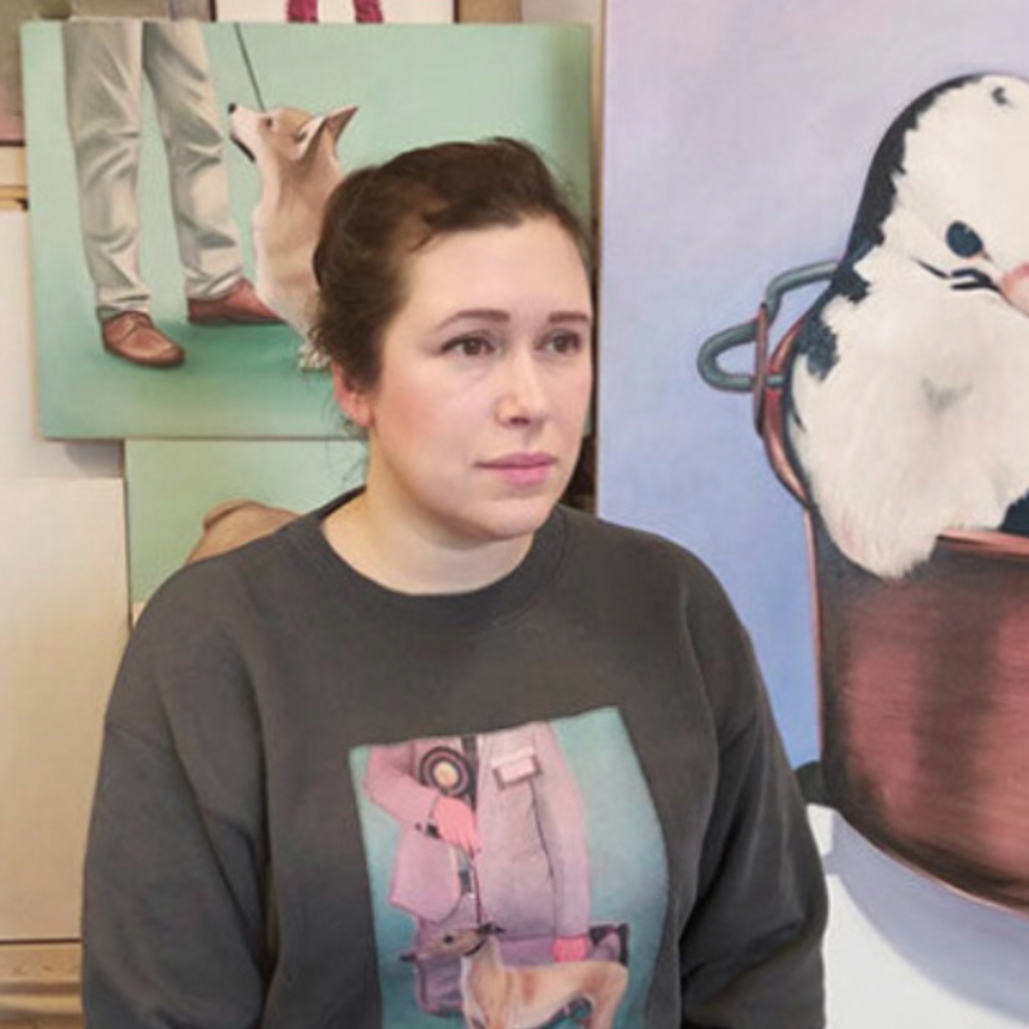
Lydia Blakeley (b. 1980, Bracknell, UK) uses painting to interrogate aspiration and self-image in the age of social media. Starting from digital snapshots and online culture, she transforms ephemeral, aspirational imagery—pets, interiors, food trends—into refined, deadpan paintings. Her work freezes the visual noise of contemporary life, inviting reflection on the curated self and digital performance. With a background in fine art and a strong exhibition history, including Hayward Gallery, Hauser & Wirth, and Niru Ratnam Gallery, Blakeley’s practice combines cultural commentary with an instantly recognisable aesthetic.
The work
The painting Prosperous is a dazzling view of a secret garden somewhere in the American West. A bright scene of a drought-resistant garden, numerous species thrive together from small succulent variations, fleshy leaved agave to statuesque cacti, surrounded by rocks and boulders, which anchor the garden, baking in the warmth of a midday sun. The dry garden has been cultivated over more than half a century, the specimens adapting to different conditions. Nestled in the garden, a bungalow it could be a private home or a holiday let, an environment that invites a fantasy of seclusion and nurturing.

LYDIA BLAKELEY
Prosperous
2024
Oil on linen
180 x 140 cm
This smaller-scale study of the pink bungalow endeavors to compliment the paintings Prosperous and Ascension. In the foreground, a grouping of pots on a raised ledge containing various horticultural specimens, behind them a path cuts across the foreground and background, signifying a quiet space to drift through, leading the viewer through the enclosed garden, parched under the intensity of the heavy, warm sun. The path leads past the free-flowing and well-established garden, the midday sun bearing down on the diverse array of plants.

LYDIA BLAKELEY
Bungalow Vista
2025
Oil on linen
50 x 70 cm
Max Boyla

Max Boyla (b. 1991, Edinburgh, Scotland) is a London-based Scottish painter whose work inhabits a liminal space between the real and the fictional. Using synthetic satin as his surface, Boyla creates atmospheric, abstract worlds that reflect on disillusionment and the search for transcendence. His paintings are unmoored from time and place, offering meditative cosmologies that question the nature of illusion, perception, and reality. A recent graduate of the Royal Academy Schools, Boyla has already participated in major exhibitions at Hauser & Wirth, Sim Smith, Workplace, and the ICA.
The work

MAX BOYLA
Limelight (ii)
2025
Dye, acrylic and bleach on satin
60 x 110 cm
The reference of Limelight as the title for Max Boyla’s most recent works suggests a connotation towards the expression of being at the centre of attention. The phrase originates from an outdated form of theatrical lighting used on stage that heated chemicals to create a luminous beam. In play with redundant methods of innovation, the paintings embed the petroleum byproduct of polyester satin. The reflective qualities of the surface both emanate and absorb light, shifting as the palette sways around varying shades of green. Stars drift, signifying cosmological and theatrical connotations.

MAX BOYLA
Limelight (i)
2025
Dye, acrylic and bleach on satin
60 x 60 cm
Jack Burton
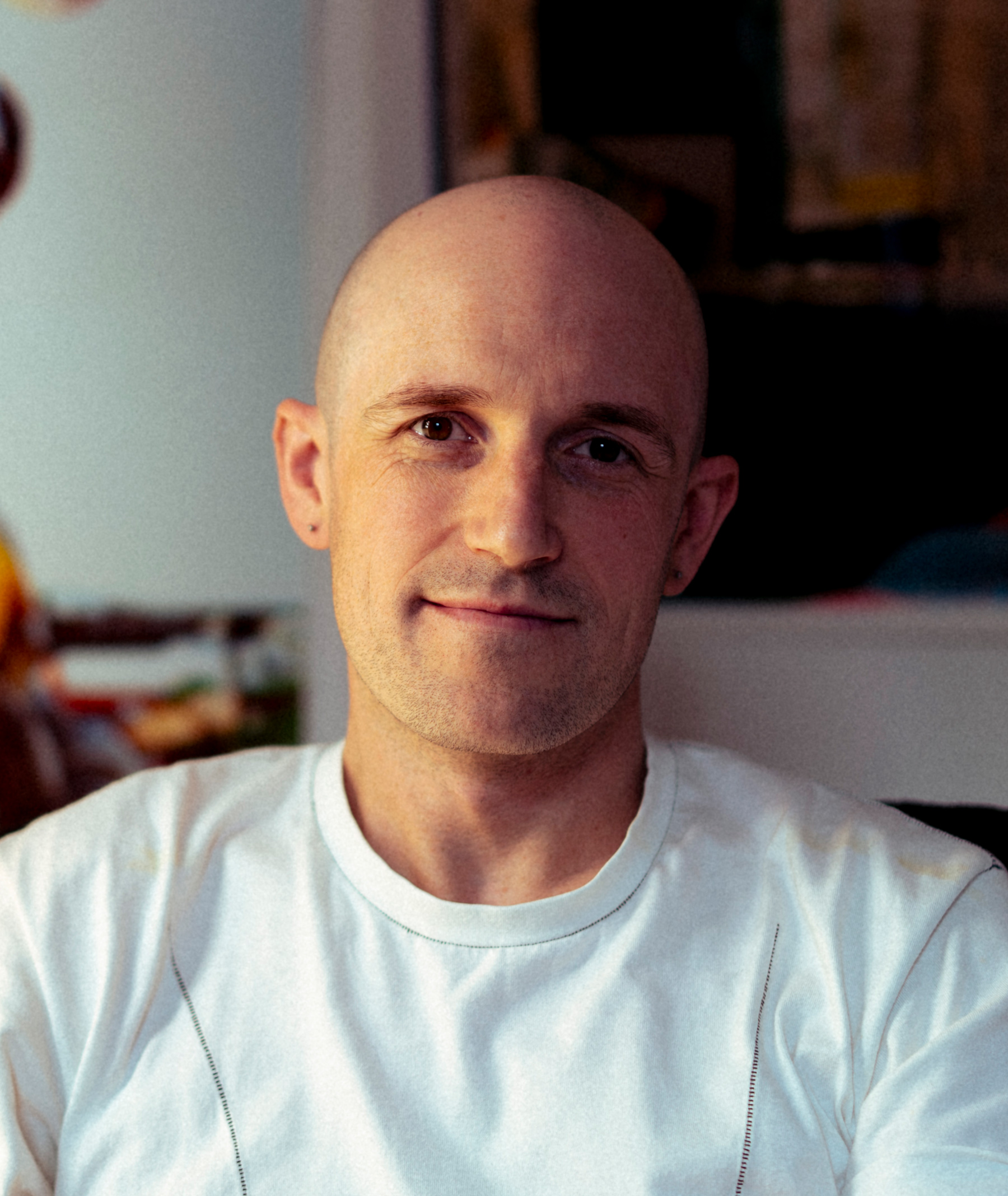
Jack Burton (b. 1988, Barry, Wales) is a painter whose works blur the lines between media, fusing photography, collage, and expressionist painting into densely layered compositions. With influences ranging from street art to pop culture, Burton’s pieces feel like fragmented dreams—chaotic, colourful, and deeply resonant. His works evoke the speed and saturation of modern life, functioning as both critique and celebration of its visual excess. Burton has exhibited widely, with recent solo and group exhibitions in Brussels, Berlin, Vienna, and Taipei.
The work

JACK BURTON
Club New World
2025
Wood, UV print on plexiglass, mirror, light, assemblage
70 x 50 x 12 cm

JACK BURTON
Sports Road Happy Valley
2025
Wood, UV print on plexiglass, mirror, light, assemblage
70 x 50 x 12 cm
Sports Road Happy Valley and Club New World are based on two matchboxes that were given to the artist by someone who spent time in Hong Kong in the 1980s. They’re matchboxes from different clubs, little fragments of a place and a time that no longer exists. Jack Burton collects these kinds of objects — matchboxes that carry a certain cultural weight, often because they belong to third spaces: bars, clubs, hotels — spaces where people gathered, where social life happened.
Here, they served as a starting point for these new works, Burton has scaled them up into illuminated signs, each containing its own small interior scene. The big matches lean inside like props, while the mirror folds the image back into itself. They’re objects about display, but also about memory — both personal and borrowed.
Richard Dean Hughes
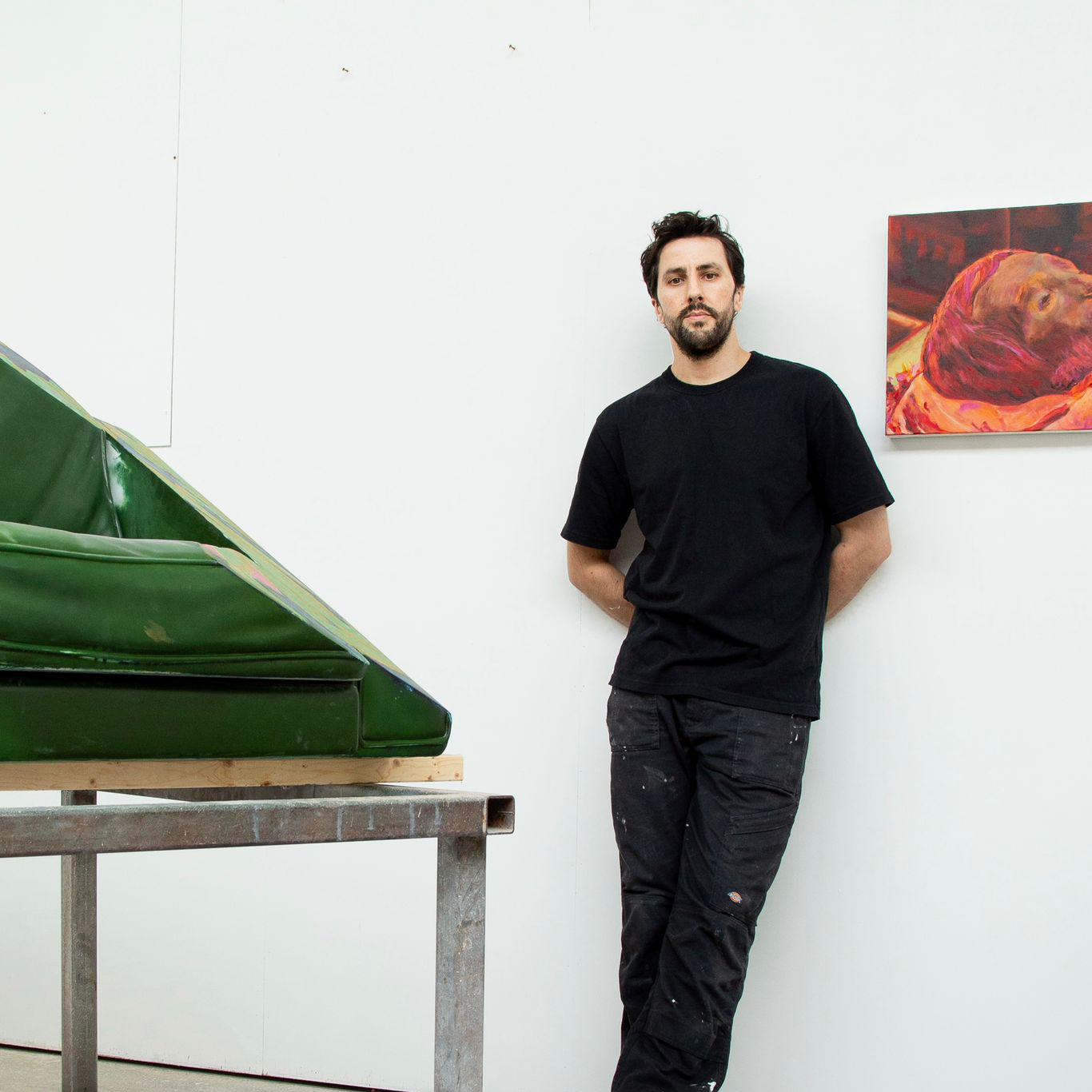
Richard Dean Hughes (b. 1987, Manchester, UK) lives and works in Manchester, UK. He describes the slippery relationship between the real and hypothetical. Hughes often revisits and describes a personal and internal space, taking artifacts, feelings and ‘visuals’ from imagined scenarios, bringing them into real time through the manipulation of material and collisional objects. His sculptures question the idea of plausibility, they question their own existence, acting as a representational display of the space in which Hughes is trying to describe. Select recent exhibitions include: Spherical Sadness,Piccalilli Gallery, London (2024); And the Safe Spots Become Impassable, Hong Kong (2024); Twelve Thousand, Duo Show with Nicola Ellis, Manchester (2024); A Mirror to Vanity, Brooke Bennington, London (2024) and NADA Art Fair New York, Xxijra Hii Gallery (solo presentation, 2024).
The work
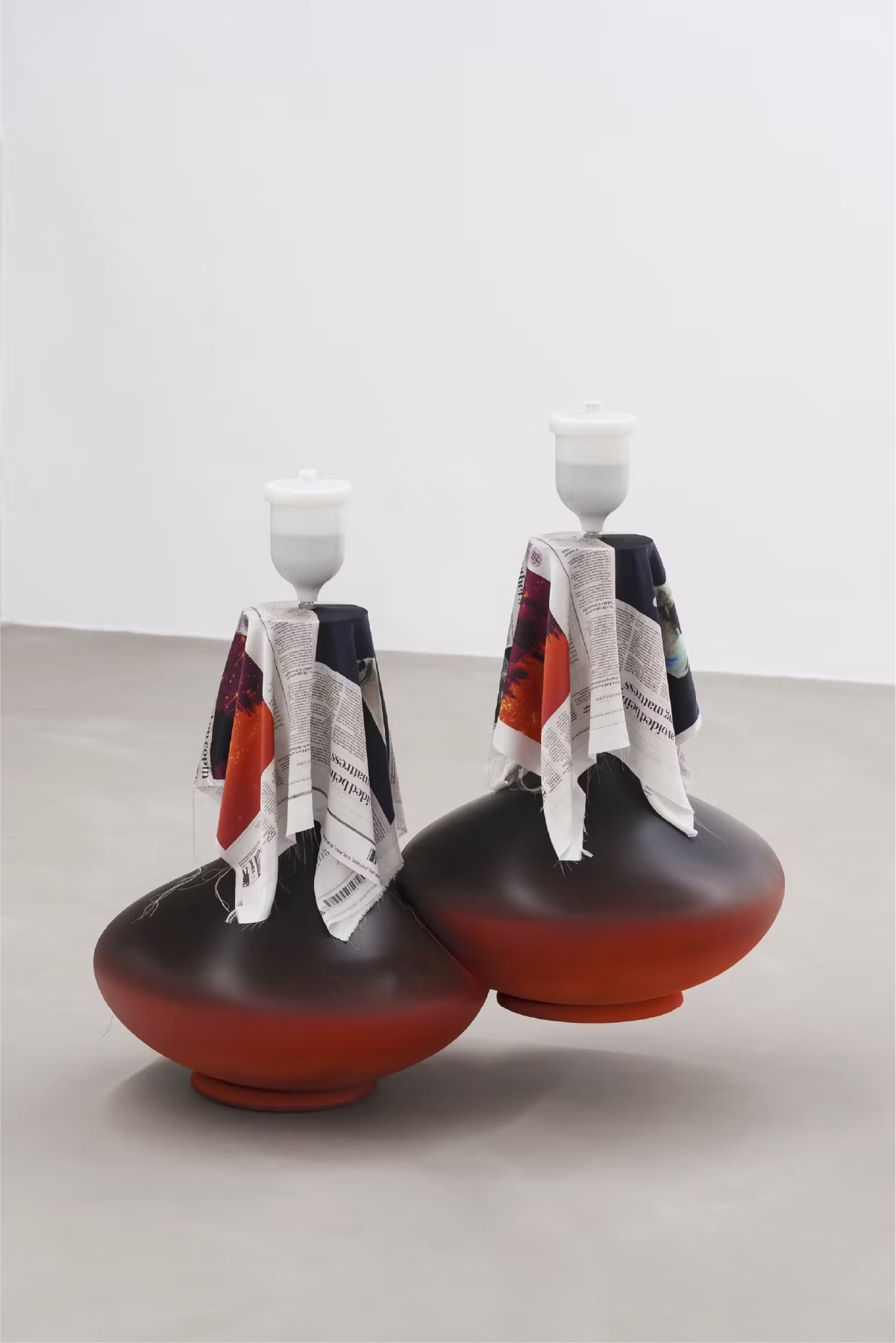
RICHARD DEAN HUGHES
SEEP
2023
Turned polyurethane, solvent based spray paint, printed silk, paint, hopper, pigmented resin
83 x 94 x 52 cm
The work is part of an ongoing series, whereby historical vessel forms are manipulated to generate an altered state of history. Synthetic and contemporary materials collide with the form to question the importance of artifice and sentimentality. The works function within the assemblage is used literally to engage within strange relationships and motifs that freeze time and slip between the real and hypothetical.
Hamish Morrow
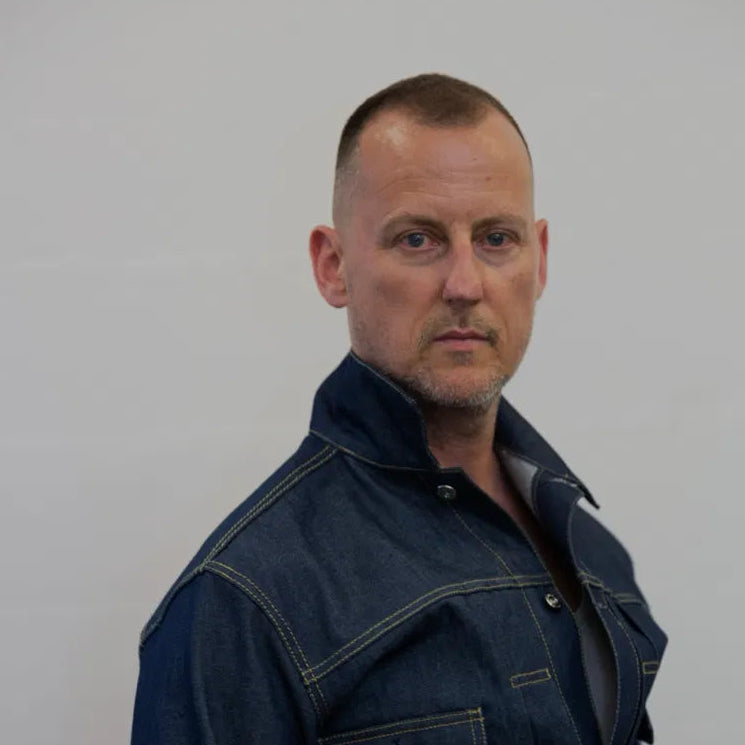
Hamish Morrow (b. 1968, South Africa) lives and works in London and Paris. Drawing on his extensive experience in fashion as a designer/creative director, he utilises aesthetics, surfaces, glamour, beauty, visual allure and seductive materials in his art making in order to create experiences/encounters that attempt to produce an emotional response in the viewer. His use of aesthetics across a diverse range of media including film, painting, sculpture, sound, performance and exhibition environments is a conscious strategy to show rather than tell, to communicate by creating visual experiences that are immediate, perceptual, pleasurable and emotional.
The work

HAMISH MORROW
Work One: Untitled
2019
Inkjet printed photocopy paper, masking tape, tinted lacquer, artists frame
26 x 29.5 cm
Circulating internet images of pornography, flowers and the fashion commodity, attempting to catch the eye of the beholder, to show rather than tell; printed, folded, creased and interwoven. The fragmented images, printed on paper, create new hybrid forms of relational juxtaposition, geometries and affective entanglements under the conditions of capital. Desire conditioned and commodified, hierarchies of beauty flattened and rendered equivalent, the politics embedded in the aesthetic choices of the artist, signifiers of aspiration and desire, visual fragments woven together to create a new totality.
Ahren Warner

Ahren Warner (b. 1986, Oxford, UK) is a multidisciplinary artist and writer working across photography, moving-image, installation, and poetry. Warner’s practice explores the intersections of affect, logic, and globalised systems of desire and consumption. Through a poetic and experimental lens, his works grapple with contemporary illiberalism, capitalism, and the disorienting conditions of modern life. Recent exhibitions include solo and group shows at TJ Boulting, Saatchi Gallery, South London Gallery, and Centro de Cultura Digital in Mexico City. He has also received numerous literary awards and published three critically acclaimed books.
The work

AHREN WARNER
You say I love you, lying completely
2025
Oil on aluminium dibond
152.5 x 122 cm
Part of a series of works that combine fragments of a poetic text with abstract painting, in which the process of painting, the gestures, palette, composition and mark-making respond to the language presented in the works.
